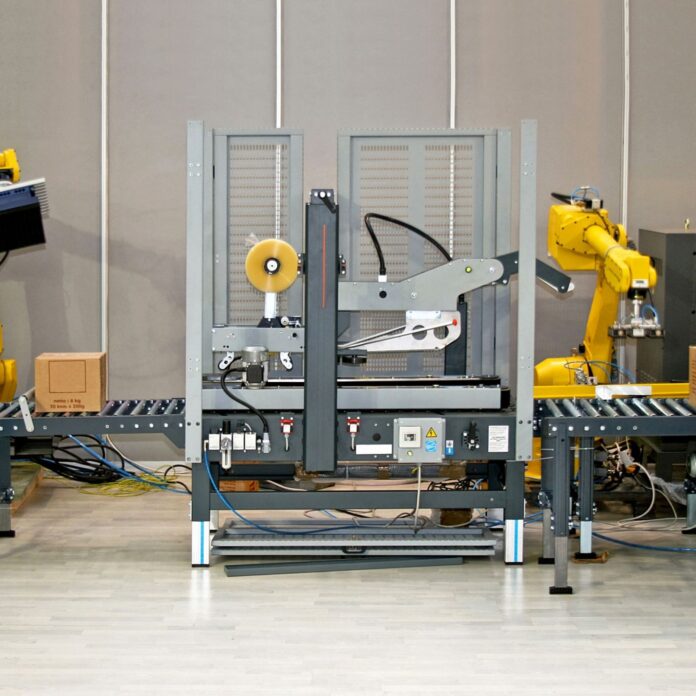Amazon’s automated shipment centers are large-scale examples of the cyber physical systems driving toward Industry 4.0, or the fourth industrial revolution. The leading online marketplace’s “fulfillment centers” already rely on more than 15,000 robots to pick out merchandise for orders. The company also utilizes one of the largest robotic moving arms in the world to help transfer pallets, and the creation of the Amazon Picking Challenge suggests continued automation for tasks currently preformed by humans.
Amazon’s current automated processes
In late 2014, Amazon described the technology behind its eighth-generation fulfillment centers:
- Kiva robots, of which Amazon currently has more than 15,000, operate across the U.S.;
- Robo-Stow, one of the largest robotic arms in operation, moves large quantities of inventory for customer order fulfillment;
- New vision systems enable the unloading and receipt of an entire trailer of inventory in as little as 30 minutes instead of hours;
- High-end graphically oriented computer systems aid employees in order fulfillment.
Those technologies found their way into at least 10 fulfillment centers throughout Amazon’s footprint, providing the company the level of automation required to fulfill orders within a matter of minutes.
Rolling robots
Amazon warehouses contain thousands of shelves filled with tens of thousands of products. To deal with such high-capacity shipments, Kiva robots are contacted with the location information of a product the moment a shopper presses “checkout.” These robots, formerly under Kiva Systems and now Amazon Robotics, are programmed to travel in the four cardinal directions to reach their destination. To reduce congestion in the warehouse’s “highways,” the robots are told to travel underneath shelves as much as possible. Once at the desired shelf, the devices do a corkscrew motion to lift the shelf off the ground and transport the entire unit to the queue line where humans pack the appropriate items. The robot then travels back into storage and finds a new spot in an area with densely filled shelves.
“The wider use of robots at fulfillment centers has had a direct impact on productivity,” Phil Harden, Amazon’s director of investor relations, said in a 2015 earnings call. “It’s a bit of an investment that has implications for a lot of elements of our cost structure, but we’re happy with Kiva. It has been a great innovation for us, and we think it makes the warehouse jobs better and we think it makes our warehouses more productive.”
Robo-Stow
Robo-Stow is one of the largest robotic arms in the world. It weighs six tons and can hold pallets that weigh up to 3,000 pounds. Those pallets are lifted 24 feet in the air and dropped onto conveyor belts.
Amazon claims that if you put a cup filled with water on top of a pallet, the robotic arm would not spill a single drop. The Robo-Stow has been installed in a number of facilities throughout the country and is capable of continuously reproducing exact movements.
A robotics competition hosted by Amazon, for Amazon
The Picking Challenge is an annual event that was first held last year. Although Amazon has used automated systems to reduce walking and searching for items, it claims that “commercially viable automated picking in unstructured environments still remains a difficult challenge.” The competition was established to try to solve the problems faced with automated picking and to “strengthen the ties between the industrial and academic robotic communities.”
All participants were given the challenge of creating a robot that could grab an item from a box and place it on a shelf. Additionally, the robots had to remove shelved items and transfer them to boxes.
This year’s $25,000 cash prize went to TU Delft Robotics Institute and Delft Robotics out of the Netherlands. Its winning robot uses a suction cup, two-fingered gripper and a 3D depth-sensing camera to effectively grab and transport objects.
The competition stands as a testing platform for Amazon’s own hopes to automate the processes of transferring items off of shelves and into homes.
The human element
Still, the Delft robotics team’s winning creation is only able to retrieve 100 items per hour, whereas humans are able to retrieve 400 items in that same time period. Humans are also much less likely to drop an item, according to TechRepublic. Amazon currently employs 220,000 people, and said that its ongoing automation initiatives will not have an impact on the employment status of its workers.
“There has been no job loss associated with the use of robotics in our buildings and, in fact, due to increased efficiencies, some of our buildings utilizing robotics have the highest headcounts in our network,” said an Amazon representative in a statement to Geekwire.

